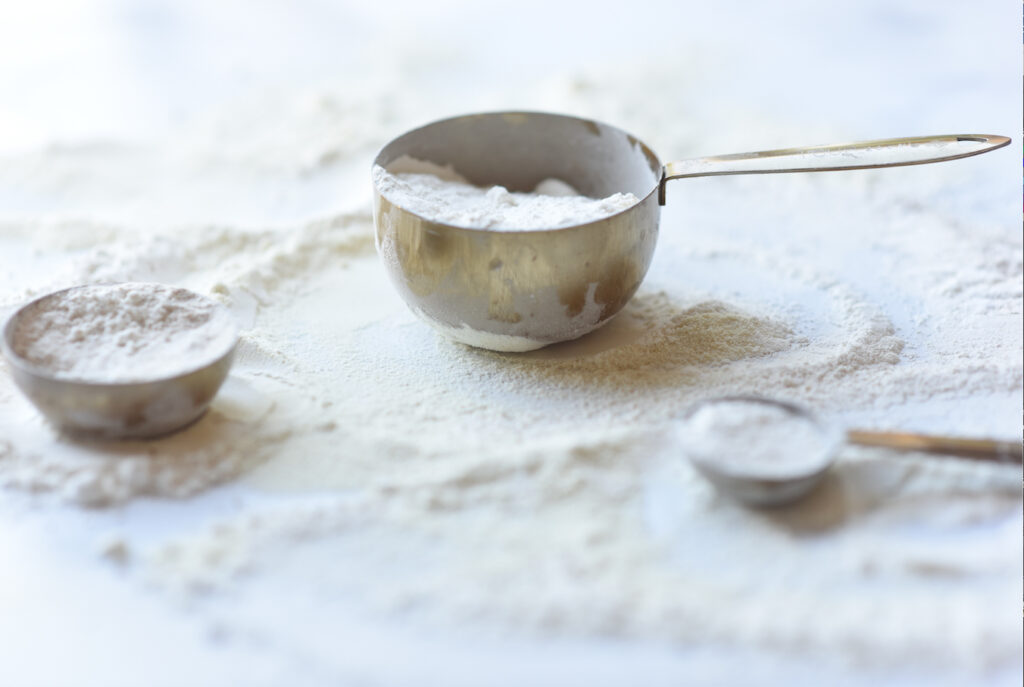The break down on Flour and how substituting can make or break a dish.

Bleached vs Unbleached
When flour has been milled the yellow carotenoid pigments will slowly and naturally fade over time, leaving the flour a natural off white color. Because of the lengthy wait, chemicals are added to help speed up the process, the flour is bleached to a bright white. Just like their names, “bleached” has been chemically treated and “unbleached” has not. Although you can can interchange Bleached and Unbleached in most recipes, ultimately it does effect the the outcome of your final product.
Due to the processing in bleached flour, it ends up with a lower protein content. When making cakes or baked good you want more soft and airy textures, so opting for the bleached flour will achieve a better outcome for soft baked goods.
Bread Flour
Gluten 12-14%
- High protein which means higher gluten.
- Will give a chewier texture in some baked goods.
- Staple for achieving correct textures and appropriate density in bread making.
This flour has one of the highest protein levels which leads to more releasing of gluten during the kneading process. Gluten is the stringy pull that gives dough its stretch and elasticity. Many baked goods require Bread Flour, to get its characteristic shape and texture. If you use this in cookies or other baked good such as pizza dough you can get a more chewy texture.
Substitute: You can use all purpose flour, you will just get a less chewy texture.
All-Purpose Flour
Gluten 9-12% Usage:
- Used for most baked goods.
- Good for thickening sauces.
The most versatile all-purpose flour mixes soft and hard wheat. This leaves its protien in the middle portion range, which is why everyone should have a bag on hand. Ideal for most of you baking needs.

Pastry Flour
Gluten 8-9%
With an 8 to 9 percent protein content, pastry flour falls in between all-purpose flour and cake flour. It strikes the perfect balance between flakiness and tenderness, making it the go-to choice for pie crusts, tarts, and cookies. You can even make your own at home by mixing 1 1/3 cups of all-purpose flour with 2/3 cup cake flour.
Substitute:
Self Rising
Gluten 8-9%
- Has baking powder and salt added during proccessing.
- Will self rise.
- Be careful to not use this as a substitute in other recipes, it can effect the baking ingredient ratios and final results.
This flour does exactly what the name indicates it to do, helps the baked goods rise. Made out of wheat with comparable gluten levels to the Pastry Flour, then salt and baking powder are added during the processing.
Substitutes: Make your own by combining 2 cups of Pastry Flour or All- Purpose Flour, 1 tablespoon of baking powder and 1 teaspoon of salt.
Cake Flour
Gluten 5-8 %
- Absorbs more liquid, this will leave you with a more moist cake.
- Less gluten means more soft and airy baked goods.
Because of the lower gluten content you will get a more softer and fluffy baked good. Why? We’ll lower protein gives the starch more texture without toughening the gluten. The precise reason I love it for cakes! But you can use cake flour in many other things to achieve a most and soft out come.
Substitutes: Remove 2 tablespoon of flour per cup and add 2 tablespoon of cornstarch.

Useful information